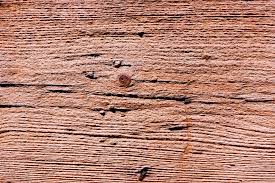Often, during winter, homeowners are surprised to see water drips and droplets on attic ceilings, walls, and the underside of their roof, when it’s not even raining or snowing outside! As shown in the picture below, sometimes, it seems to those who own a home that their roof, wall, or ceilings are crying because of water droplets that appear around nails. After spending a lot of physical and emotional energy trying to figure out the source of the moisture, they end up calling professional roofing contractors, like South Shore Roofing, to investigate the source of wet wood in their home.
Many New England homeowners don’t realize that moisture can still build up in the top floor of their home or underneath their roof on cool, dry, winter days because of condensation challenges. Condensation occurs when attics are too warm and there’s no way for air to escape outdoors or to circulate. Sure, everyone would prefer that their attic feel warm & cozy when they need to visit it to bring down a treasured item that’s been tucked away in the attic. But, since most of us don’t spend a lot of time in our attics, and the trade-off of having a warm attic is the build-up of annoying and damaging moisture, we’re actually better off keeping our attics cool from home-damage, health, and cost perspectives.
How to Know If You Attic or Roof is Moisture-Challenged
In addition to beads of water on walls, ceilings, or your roof, you may notice these other common signs of a moist attic or roof:
- Staining, discoloration or warping of wood or other attic materials
- Foggy/frosty windows
- Musty smells
- Mold
- Wood rot
- Masonry deterioration
Why You Need to Address Attic and Roof Moisture
Left untreated, attic moisture can lead to some of the unpleasant, unfavorable conditions listed in the above-section of our blog. These can, in turn, lead to expensive, extensive home damage and associated repair costs, but most importantly, can make family members very ill.
How South Shore Roofing Experts Can Help
To prevent, moisture build-up and condensation, attic temperatures should be kept as cold as the outdoors. This can be accomplished simply through improved air ventilation and circulation in your attic – basically, you want air to be able to flow both in and out of your attic. Our team of roofing specialists can undertake the following to create better airflow, and ultimately, a colder atmosphere in your attic by installing:
- Soffit vents underneath your gutters/in your attic’s eaves to let air flow into your attic.
- Roof ventilation at the peak of your roof, known as a ridge vent or ridge venting, which allows air to flow out. This requires an opening to be cut across your roof’s peak to expose the attic below. A ridge vent is, then, placed over that opening to allow air to exit the attic.
Say Goodbye to Moisture, and Hello to a Healthier, Safer Home
Your family and your home are your most important assets. So if you believe your roof or attic are showing signs of moisture build-up, contact us today, so that our South Shore roofing company can assess your attic and roof situation.






